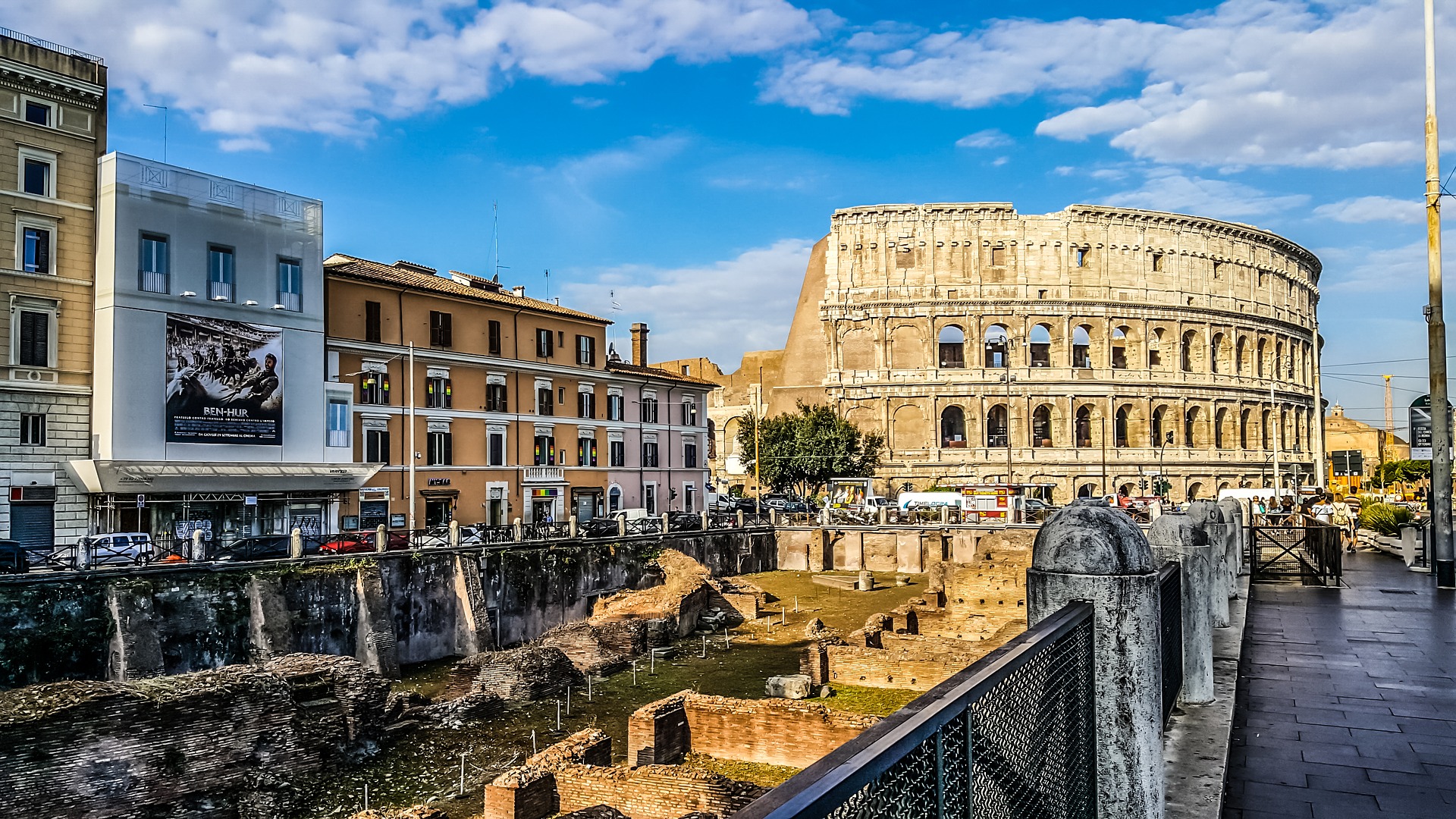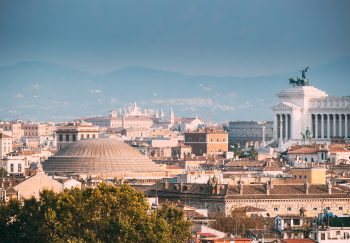This day I’m heading towards Piazza Navona because it feels right. But I don’t stop for street performers; I head behind the piazza to find Via dei Coronari. It is a beautiful, mostly pedestrian street lined with cafes and shops.
As I make my way towards the Vatican I stop at these stores that sell unique antiques.
All these shops have one thing in common: they lack customers. “How do they pay rent?” I ask. “How do they pay their mortgage? Buy groceries? Make car payments?” I keep asking.
Knowing some Italian is a great idea before you travel. Babbel is a great way to learn basic Italian or have deeper conversations with others on your trip to Italy. Flexible lessons can be arranged to suit your needs. You can find language options and special deals.
I’ve seen these shops on this street year after year, decade after decade. They are always empty. Maybe they arrive late at night, I wonder. I follow my feet and head back towards Piazza Farnese. I cross the Corso, then take a back street, exiting right in front of the French Embassy. I find a church on the corner, with wide doors, which I enter.
Bridgettine Nuns
Two nuns sit in the back of the church wearing strange straps that look like helmets. I found out later that night that the strange headgear represented Christ’s crown made of thorns.
They are known as Bridgettine nuns and were established in 1344.
After I had stopped staring at the heads of the nuns, I was able to relax and enjoy the peace. I was lifted by the beauty and elegance of the church. It had a classic baroque style that exuded a lightness that lifted my spirits. I offered a prayer of thanksgiving, looked at the helmeted nuns once more, and then I left.
Explore the Jewish Quarter
My instinct took control and I went to the Jewish Quarter. It was a brightly lit area with delicious food, but with a tragic history. When Pope Paul IV in 1555 moved Rome’s Jews to a seven-acre flood-prone area, the Reformation and Counter-Reformation religious waves swept them up.
These walls housed the Jewish population for three centuries. They were subject to a curfew, employment restrictions, and a curfew until 1848 when the Ghetto’s walls fell. During this time, the Jewish residents received full rights and citizenship and were able to enjoy greater freedoms until World War II.
The Nazis demanded 50 kilograms of gold from the Jewish community to pay the ransom when they occupied Rome. Otherwise, they would deport them immediately. Chief Rabbi Israel Zolli sought help from the Vatican and was granted a loan to cover the entire amount. The money would be repaid after the war.
The loan was not necessary because so many Jews and non-Jews offered to lend their jewelry and watches in gold to pay the ransom. The gold payment did not delay the arrest and deportation of approximately 2,000 Jews. Half of them were sent to Auschwitz. Only 16 of them returned to Rome, while few survived.
As I walk through the Jewish Quarter, my eyes stop at the memorial stone plaque for the victims of the Nazi extermination on October 16, 1943. I turn left down a side street, where I find the bronze names of those who were exterminated and sent to a concentration camp.
I stop and look down at the bronze cobblestone below me. “Here lived Silvia Serbianeta, born 1897. She was deported on October 10, 1943, to Auschwitz, and assassinated on July 15, 1944, on Via Salaria.”
I continue down the street to read: Costanza Sonnino was born in 1909, was deported on October 4, 1943, and died in Auschwitz at an unspecified place.
The bustling streets and shops are a stark contrast to the horror that occurred in October 1943. As I walk along those streets, I am engulfed in the terror and tragedy of that day.
Fountain of the Turtles, Rome
My feet lead me to a lighter-hearted monument as I walk out onto the Via del Portico d’Ottavia main street in the neighborhood. Soon I am standing in front of the Fountain of the Turtles. It was built during the 16th century.
The fountain is located outside of a bricked-up window in a small plaza. There are very few tourists, the water is bubbling, and the sun shines brightly. This place, like all historic places in Rome, has a story.
It’s a story of love and perseverance. Duke Muzio Mattei built the fountain overnight outside the window of his beloved to win her heart and approval. The permission was granted and the marriage took effect. To ensure that nobody else could see the fountain from this angle, the window was closed.
Trajan’s Market: Ancient Shopping in Rome
It is time to leave the area. I feel drawn toward the Forum so I walk in that direction. I eventually arrive in Piazza Venezia where the “wedding cakes” building attracts tourists for photos. However, I’m not interested in it. I cross the street and walk past Trajan’s Market. It is the oldest shopping center in ancient Rome dating back to 113 CE.
Over 150 Italian shops, offices, and shops offered goods from across the Empire, including fruits, vegetables, spices, and fast food.
Rome: A Visit to the Angelicum
This section is less popular and is great for those who want to get away from the crowds. The sun is still beating down and I’m ready for another adventure. I circle Trajan’s market and make my way towards the Angelicum. Here I received my theology and philosophy degrees.
It was decades since my last visit and I didn’t know how to gain access because I wasn’t a student. I still climb the same steps that I used to when I was 19, and I soon find myself in the courtyard, surrounded by classrooms where I spent my academic years.
I found few people so I explored and returned to the bar. It is still there, but it was closed today. I pass a Roman-collared man who stares at me as if he wants to eat me alive!
Memories from Rome
I keep walking along the corridors until finally, I reach the garden. My mind is flooded with memories of the philosophy exam I took with an Italian professor. He asked me questions about metaphysical subjects and I responded as best I could. We moved along the garden paths together. Although it was pleasant and sunny, it was nerve-racking.
I return to the courtyard and try another of the classroom doors. It is not locked! I go to the courtyard and search for the classroom I took philosophy classes in Rome the first year. I open the door and take a seat at the desk I used to sit so many years ago.
It was a wonderful feeling to feel part of such a rich history. The Angelicum began in 1580 as the College of St. Thomas and became a fully-fledged Pontifical University by 1906.
The campus was established on the spot that had been used as a monastery since 1932 and has served this purpose ever since.
As I sit here, I reflect on my past and the history that has brought me to this moment. It all leaves me confused, but I am also thankful.
Full Circle
My feet led me back to the place I started my education in Rome. I was able to reflect on how my life turned out.
This was where I found my passion for Rome. I went on secret tours to see the monuments and churches, and I also took archeology classes. It was here that Rome first seduced me.
Within an hour, I was in Rome. I found myself among nuns of an order from the 1300s. I was also surrounded by the Holocaust. I was then swept up in a fountain of love and walked back to a mall in 113 CE. I ended up at a university established in the 1500s where I started my higher education. Rome is the only place that can offer such a vast array of opportunities.












